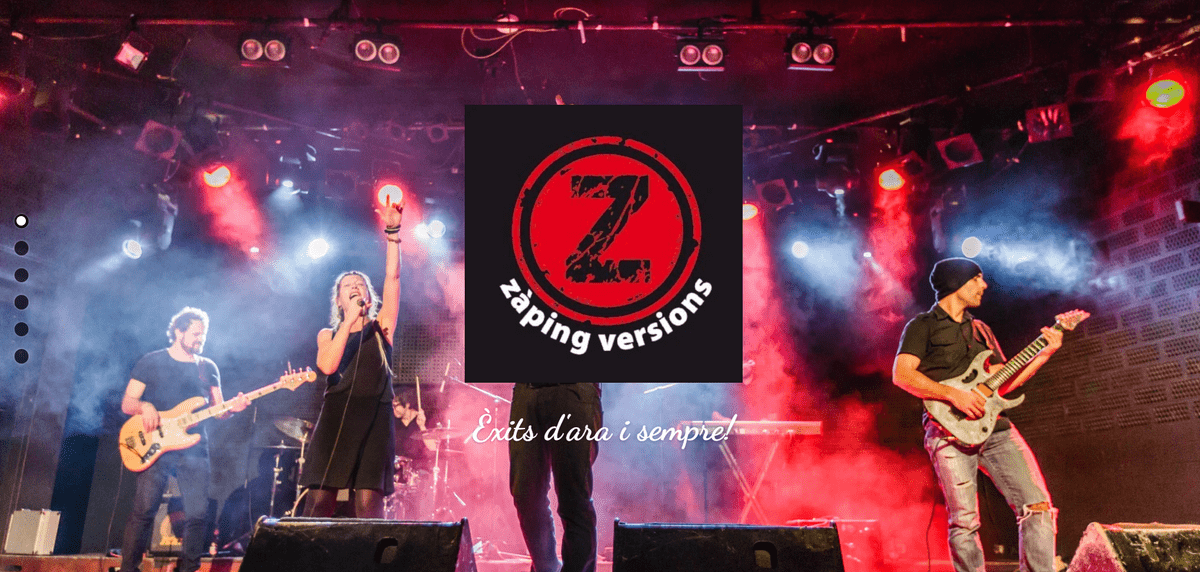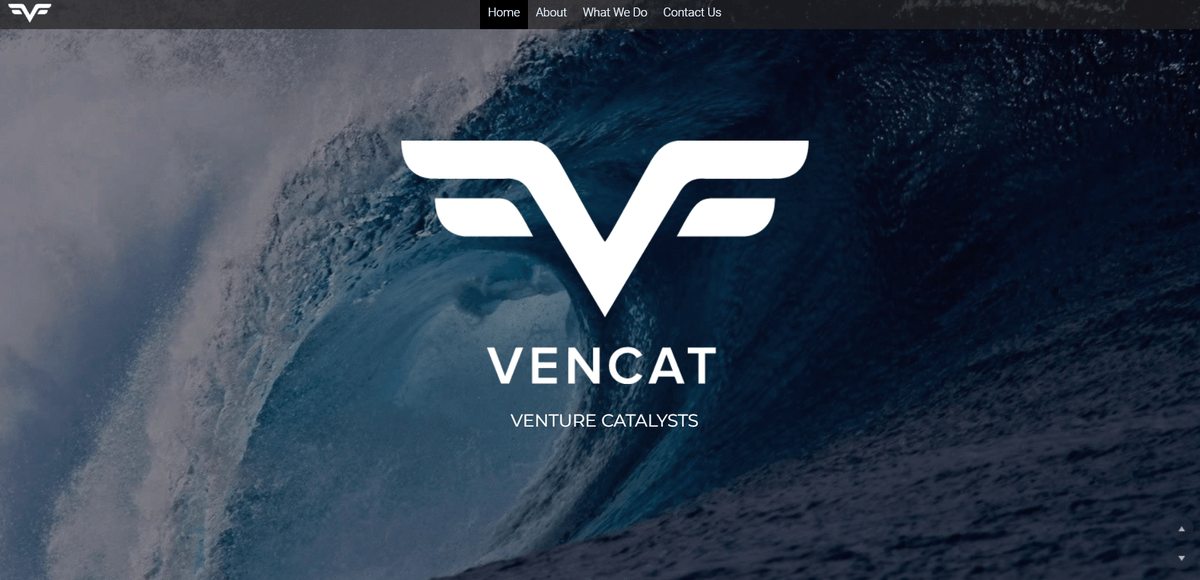Logo Size Matters: How To Optimize For Websites & Social Media
Logo Size Matters: How To Optimize For Websites & Social Media

Logo size plays a crucial role in the success of websites and social media platforms. Regarding brand visibility, a logo's dimensions can significantly impact how users perceive it. Choosing the best size for your logo is significant as it directly affects the overall aesthetics and user experience. In this article, we will explore the importance of the best logo size for websites and social media, understand its impact on brand visibility, and discuss the significance of selecting the optimal dimensions for your logo.
Importance of Logo Size for Websites & Social Media
Logo size holds immense significance for websites and social media platforms. A well-sized logo ensures your brand identity is effectively communicated to visitors and followers. It serves as a visual representation of your business or organization, making it essential to choose a size that captures attention while maintaining clarity.
Impact of Logo Dimensions on Brand Visibility
The dimensions of a logo directly affect its visibility across different mediums. Whether displayed on a website or shared on social media, an appropriately sized logo enhances brand recognition and recall. It helps establish a solid visual presence, making it easier for users to identify and remember your brand.
Significance of Choosing the Best Size for Logo
Selecting the best size for logo is crucial as it determines how well it integrates with your website or social media profile. A poorly sized logo can appear pixelated or too small, diminishing its impact on users. Conversely, an oversized logo may dominate the page, overshadowing other essential elements. Striking the right balance ensures that your logo complements your overall design while effectively conveying your brand message.
This article will investigate why the best logo size matters for websites and social media platforms. We will explore the role of logos in website design, the impact of logo size on aesthetics and user experience, and how to optimize logo dimensions for responsive web design. Additionally, we will discuss the influence of logo size on social media, including platform requirements and best practices for resizing logos. We will also provide standard logo size guidelines for websites and social media platforms.
Furthermore, we will guide you in finding the best size for your logo by considering your brand identity and message. We'll discuss the importance of conducting A/B testing to determine optimal dimensions and utilizing user feedback and analytics to refine your logo's size.
Throughout our discussion, we will analyze case studies of successful brand logos and their optimal size choices. This analysis will highlight the impact of the best logo size on brand recognition and recall.
Lastly, we'll discuss Strikingly's role in helping businesses optimize their logo sizes. With its intuitive website builder and design tools, Strikingly empowers companies to create visually appealing websites with perfectly sized logos.
Understanding the importance of the best logo size for websites and social media is paramount in maximizing brand visibility and recognition. Choosing the best dimensions for your logo can enhance brand aesthetics while effectively conveying your message to users. With Strikingly's assistance, creating and resizing logos becomes a seamless process that ensures maximum impact across different platforms.
Why the Best Logo Size Matters for Websites
Image taken from Founder Mastermind
1. Logos in Website Design
Logos play a crucial role in website design as they serve as the visual representation of a brand. They help create brand recognition and establish a strong identity for businesses. A well-designed logo can convey a company's values, personality, and professionalism, making it an essential element in website design.
2. Logo Size on Website Aesthetics & User Experience
A logo's size directly affects a website's aesthetics and user experience. A too-small logo may go unnoticed or appear insignificant, while an oversized logo can dominate the page and distract users from the content. Finding balance is critical to creating an appealing and visually harmonious website.
3.Logo Dimensions for Responsive Web Design
Responsive web design ensures that websites adapt seamlessly to different screen sizes and resolutions. Logo dimensions play a vital role in this aspect as well. A correctly sized logo will maintain visibility and legibility across various devices, ensuring your brand remains consistent regardless of how users access your website.
By optimizing your logo dimensions for responsive web design, you enhance the user experience on different devices while maintaining brand consistency.
Strikingly understands the importance of the best logo size in websites' visual appeal and user experience. Their platform provides tools and templates that allow businesses to easily customize their logos according to their desired dimensions, ensuring optimal branding impact.
Remember, finding the best size for a logo involves considering both aesthetic appeal and practicality across various devices. Strikingly can be your reliable partner in achieving this balance effectively.
The Influence of Logo Size on Social Media
Image taken from Emilio Rios Designs
Social media platforms have specific requirements for logo sizes, and understanding the relationship between the best logo size and these platform requirements is crucial for adequate brand visibility. Regarding social media, logos significantly represent a brand's identity and attract user attention.
1. Logo Size & Social Media Platform Requirements
Different social media platforms have varying specifications for logo sizes. For example, Facebook recommends a minimum logo size, 180 x 180 pixels for profile pictures, while Twitter suggests using images with 400 x 400 pixels or larger dimensions. Adhering to these platform-specific guidelines ensures your logo appears clear and professional across social media channels.
2. Small Logos on Brand Recognition & Engagement
A small logo on social media can negatively impact brand recognition and attention. A tiny logo may be complicated for users to identify, especially when displayed alongside other content in their feeds. Ensuring your logo is appropriately sized increases the chances of users recognizing your brand quickly and engaging with your content.
3. Best Practices for Resizing Logo Sizes for Different Social Media Platforms
To optimize your logo's impact on social media, resizing it correctly for each forum is essential. Start by creating a high-resolution version of your logo that can be scaled down without losing quality. Then, follow the specific guidelines provided by each platform to resize your logo accordingly.
An image editing tool or professional design software like Adobe Photoshop can help you resize your logo accurately while maintaining its quality. Adhering to best practices for resizing logos on different social media platforms ensures your brand is represented consistently across all channels.
Businesses can use Strikingly's user-friendly website builder and logo resizing tools. Strikingly provides templates and guides that help companies to create logos with optimal dimensions for various social media platforms. By utilizing Strikingly's resources, businesses can ensure their logos are visually appealing and effectively represent their brand on social media.
Logo size is crucial in brand visibility and recognition on social media platforms. Adhering to platform-specific requirements, avoiding small logos that hinder engagement, and following best practices for resizing logos are essential steps in optimizing your brand's presence on social media. With the assistance of platforms like Strikingly, businesses can create and resize logos that make a lasting impact on their target audience.
Standard Logo Size Guidelines for Websites & Social Media
Image taken from Real Meal Grill Detroit
Adhering to industry standards for websites and social media platforms is essential regarding logo size. By understanding these guidelines, businesses can ensure their logos are displayed optimally across various platforms and devices.
1. Exploring Industry Standards for Logo Dimensions on Websites
Websites serve as digital storefronts for businesses, making it crucial to have a well-sized logo that represents the brand effectively. Industry standards suggest that logos should be large enough to be easily recognizable but not so large that they overpower the rest of the website's content.
One standard recommendation is to have a logo size of a logo around 250 pixels in width and 100 pixels in height for desktop displays. This allows the logo to be visible without taking up excessive space on the page. However, it is essential to consider responsive web design principles and ensure that the logo scales appropriately on different devices.
2. Recommended Logo Sizes for Popular Social Media Platforms
Social media platforms have specific requirements regarding logo dimensions to maintain consistency across profiles and posts. Each forum has guidelines, but some general recommendations can help businesses optimize their logos.
A square image with a minimum dimension of 180x180 pixels is recommended for Facebook profile pictures. Twitter suggests using a profile picture with dimensions of 400x400 pixels or more prominent, while Instagram recommends a minimum size of a logo around 110x110 pixels.
It is important to note that these are just general guidelines, and businesses should refer to each platform's specific requirements for optimal results.
3. Adapting Logo Sizes for Different Device Screens & Resolutions
With the increasing use of mobile devices, it is crucial to consider how logos appear on smaller screens with varying resolutions. Responsive web design plays a significant role in seamlessly adapting logo sizes to different device screens.
To ensure that logos look good on mobile devices, it is recommended to have a logo size of a logo around 64x64 pixels for smaller screens. This allows the logo to be visible without taking up too much space. Additionally, vector-based logo sizes can help maintain clarity and sharpness across different resolutions.
Adapting logo sizes for different device screens and resolutions is essential for providing a consistent brand experience regardless of the device used.
Adhering to standard logo size guidelines for websites and social media is crucial for maintaining brand consistency and visibility. By exploring industry standards, understanding recommended sizes for popular social media platforms, and adapting logos for different device screens and resolutions, businesses can ensure that their logos are displayed optimally across various platforms. Strikingly can assist companies in creating and resizing logos to achieve maximum impact in today's digital landscape.
Finding the Best Size for Logo
Image taken from Zaping Versions
When finding the best size for logo, it's crucial to consider your brand identity and message. Your logo size should accurately represent your brand and convey your message effectively. Think about the values and personality of your brand, as well as the emotions you want to evoke in your audience. These factors will help you determine the appropriate size for your logo.
2. A/B Testing
Conducting A/B testing can be a valuable tool in determining the optimal dimensions for your logo. By creating multiple versions of your logo size with different sizes and testing them against each other, you can gather data on which size performs best regarding brand recognition and engagement. This method lets you make data-driven decisions when choosing the ideal logo dimensions.
3. Feedbacks
Utilizing user feedback and analytics is another effective way to refine your logo's size. Pay attention to what your audience is saying about your logo and consider their opinions. Additionally, analyze relevant metrics such as click-through rates, conversion rates, and social media engagement to understand how well your current logo size resonates with your target audience.
By carefully considering brand identity, conducting A/B testing, and utilizing user feedback and analytics, you can find the best size for logo that aligns with aesthetic appeal and compelling brand message communication.
Now that we've explored various aspects of optimizing logo size, it's important to mention how Strikingly can assist businesses in creating and resizing logos for maximum impact. With its user-friendly platform, Strikingly offers customizable website templates that allow companies to easily incorporate their logos and adjust their sizes accordingly. Strikingly guides logo dimensions for social media platforms, ensuring seamless integration across various online channels.
As you refine your logo's size, remember that finding the right balance between visibility and aesthetics is critical. By prioritizing brand identity, conducting thorough testing, and leveraging user feedback, you can confidently choose the best size for logo and enhance your brand's visibility and recognition in both website and social media environments.
The Size of a Logo: Case Studies
Image taken from Vencat
This section will explore case studies examining successful brand logos and their optimal size choices. By analyzing the impact of logo size on brand recognition and recall, we can gain valuable insights into the importance of choosing the correct dimensions for your logo. Additionally, we will highlight the role of Strikingly in helping businesses optimize their logo size.
Successful Brand Logo Sizes
One case study that exemplifies the significance of logo size is Nike's iconic swoosh. The simplicity and scalability of its logo have contributed to its success. Nike's decision to keep its logo small allows it to be easily recognizable on various platforms, from billboards to social media profiles. By maintaining a consistent and compact logo size, Nike has ensured their brand remains instantly identifiable.
Another example is Apple's bitten apple logo. Apple has a relatively small logo across all its products and marketing materials. This consistency has helped build strong brand recognition and recall among consumers worldwide. The bite-sized Apple icon has become synonymous with Apple's innovative technology, showcasing the power of a well-designed and appropriately sized logo.
Impact of Logo Size on Brand Recognition & Recall
The effect of logo size on brand recognition and memory cannot be overstated. Research suggests that smaller logos can increase consumer engagement in their hidden nature. A study conducted by Stanford University found that smaller logo sizes were associated with higher levels of positive emotions towards brands compared to larger ones.
Additionally, a study published in the Journal of Consumer Research revealed that smaller logos are more likely to be remembered by consumers than larger ones. This finding highlights the importance of balancing visibility and memorability when determining your logo's dimensions.
Role of Strikingly in Helping Businesses Optimize Their Logo Size
Strikingly, a leading website builder and design platform, understand the significance of logo size for brand visibility and recognition. With its user-friendly interface and customization options, Strikingly empowers businesses to create and resize logos for maximum impact.
Through Strikingly's intuitive design tools, businesses can easily experiment with different logo dimensions to determine the optimal size. The platform also provides valuable insights through user feedback and analytics, allowing companies to refine their logo size based on real-time data.
By utilizing Strikingly's expertise in website design, businesses can ensure that their logos are visually appealing and memorable and effectively represent their brand identity across websites and social media platforms.
Showcase Your Best Logo Size Design With a Strikingly Website!
Image taken from Sourdough Against the System
Regarding logo size, it is crucial to consider its impact on brand visibility and recognition. By understanding the importance of logo dimensions, businesses can optimize their logos for maximum impact on websites and social media platforms. Following industry standards for logo sizes on websites and adapting them for different device screens and resolutions is essential. Additionally, resizing logos for various social media platforms is vital to maintaining brand recognition and engagement.
Logo dimensions play a significant role in brand visibility and recognition. A well-sized logo enhances website aesthetics, improves user experience, and ensures your brand stands out among competitors. Choosing the best logo size can effectively convey your brand identity and message to your target audience.
Strikingly understands the significance of logo size in establishing a robust online presence. With its user-friendly platform, businesses can easily create professional logos optimized for websites and social media platforms. Strikingly provides tools to resize logos based on industry standards, ensuring that they look great across different devices and meet the requirements of various social media platforms.
Optimizing logo size is essential for both websites and social media platforms. By following standard guidelines, considering brand visibility and recognition, and utilizing tools like Strikingly, businesses can create impactful logos that effectively represent their brands online.
Want to know more about building a strong online presence? Chat with us today!






